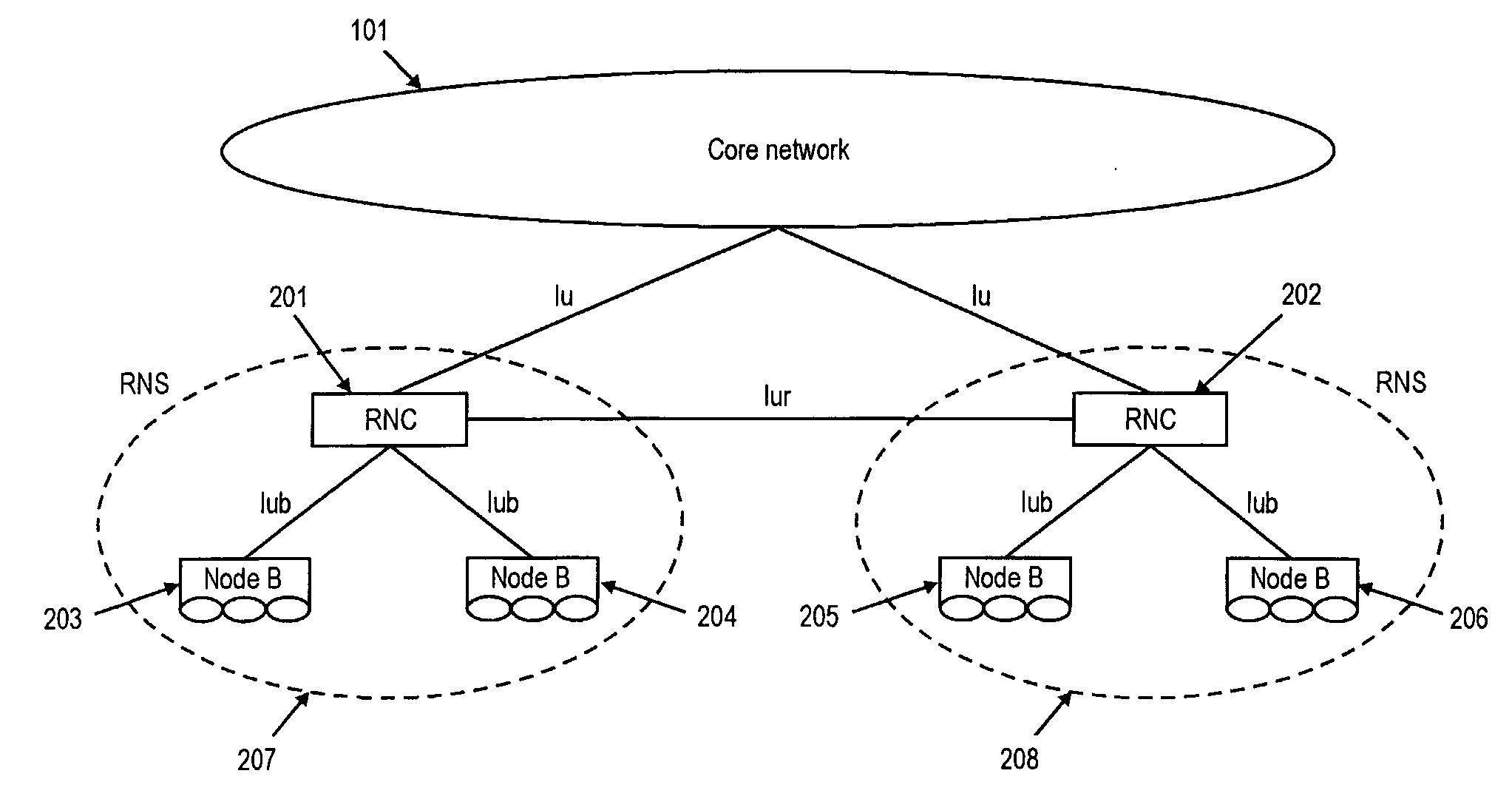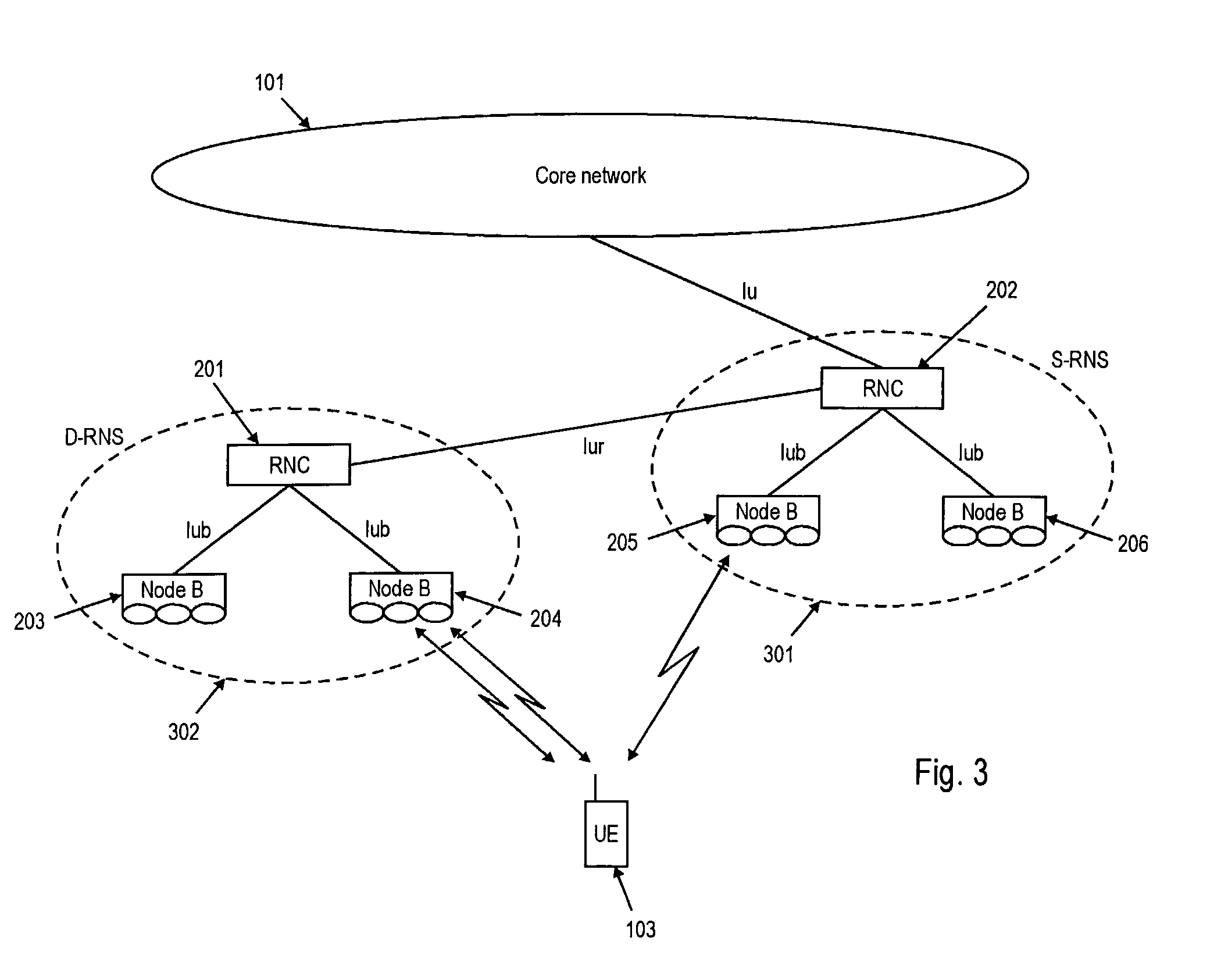Harq protocol with synchronous retransmissions
a synchronous retransmission and protocol technology, applied in the field of hybrid automatic repeat request (harq) method, can solve the problems of reducing the overall latency of communications of user equipment, simultaneous transmissions always interfere with each other, and transmissions from different user equipments may overlap in tim
- Summary
- Abstract
- Description
- Claims
- Application Information
AI Technical Summary
Benefits of technology
Problems solved by technology
Method used
Image
Examples
Embodiment Construction
[0108] One aspect of the present invention is the introduction of a synchronous transmission timing for the packet retransmissions. Retransmissions for previously incorrectly received data packets may be transmitted after a predefined time span upon having received a negative acknowledgement from the receiver.
[0109] If the decoding of a received data packet has not been successful, a Node B may transmit a negative acknowledgement (NACK) to the user equipment in the downlink. Since retransmissions are sent at a predetermined point of time, the Node B does not need to schedule the retransmission even in the case, that transmission on an E-DCH is carried out in the time and rate controlled scheduling mode. Hence, no scheduling assignment message needs to be transmitted to the user equipment. Furthermore the Node B is aware of the time instant when retransmissions will be transmitted from the user equipment and may thus reserve resources for the transmission of retransmission data pack...
PUM
 Login to View More
Login to View More Abstract
Description
Claims
Application Information
 Login to View More
Login to View More - R&D
- Intellectual Property
- Life Sciences
- Materials
- Tech Scout
- Unparalleled Data Quality
- Higher Quality Content
- 60% Fewer Hallucinations
Browse by: Latest US Patents, China's latest patents, Technical Efficacy Thesaurus, Application Domain, Technology Topic, Popular Technical Reports.
© 2025 PatSnap. All rights reserved.Legal|Privacy policy|Modern Slavery Act Transparency Statement|Sitemap|About US| Contact US: help@patsnap.com



